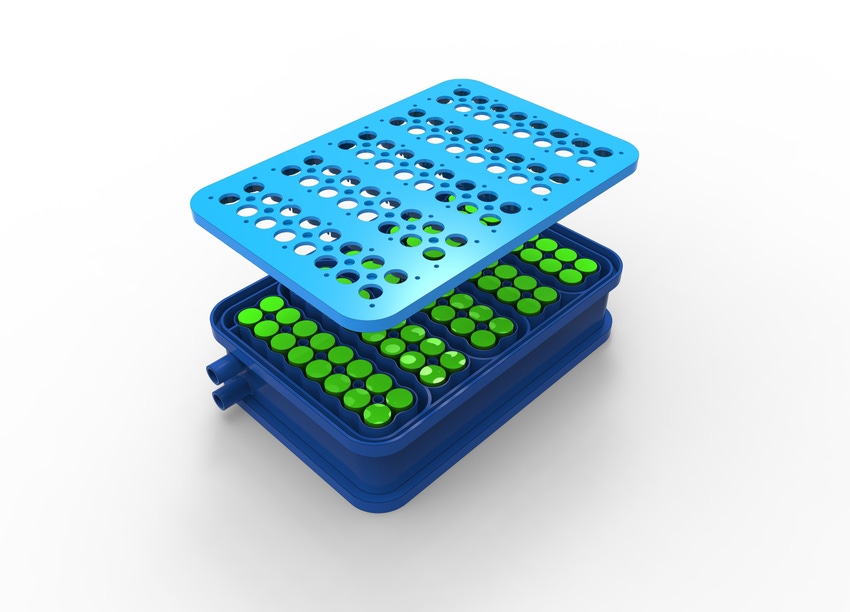Thermoplastic could be used in battery packs to eliminate need for metal conduits to carry coolant.
September 14, 2017

A new thermoplastic material could enable battery makers to integrate cooling channels into a battery’s case, resulting in a lighter pack with higher energy density.
The new material, known as BayBlend TP4065, brings a new wrinkle to battery development because it can stand up to liquid coolants without degrading. As a result, battery makers can now mold channels into the plastic itself, instead of using metal conduits to carry the coolant throughout the pack.
|
Using a new thermoplastic called Bayblend TP4065, cooling channels can be integrated into the battery pack’s plastic case. (Source: Covestro LLC) |
“You can mold your cooling channels right next to the battery’s cells, so they conform to the region where you want to remove the heat,” Ignacio Osio, marketing manager for electric vehicle battery packaging at Covestro LLC, told Design News. “It makes it easier because you can incorporate all the complexity into the injection molding process.” Osio noted that it also reduces bill of material costs and slashes pack weight because it eliminates the need for metal tubing.
The new material could potentially replace conventional polycarbonate acrylonitrile butadiene styrene (PC-ABS) materials, which are commonly used in battery packs today. Up to now, conventional PC-ABS pack materials have offered all the necessary mechanical characteristics, but they degraded during long-term exposure to the water glycol coolants used in batteries. As a result, aluminum tubing was typically used to transport the coolants.
The new material, introduced at The Battery Show in Novi, MI, this week, solves that problem by employing a new thermoplastic blend. At the same time, it offers the necessary notched Izod impact testing characteristics needed for the type of abuses that batteries typically undergo, such as vibration, collision, shock and drop.
“You need a material that’s tough enough to protect the cells,” Osio said. “PC-ABS had those properties, too, but it didn’t have the resistance to water glycol.”
Covestro plans to target the new material at all kinds of battery applications, ranging from autos to trucks to buses, but especially at those requiring fast-charging capabilities. Because fast charging uses high current and dissipates significant heat, cooling capabilities are more critical, Osio said.
For battery makers, however, the biggest benefit may lie in the new material’s ability to reduce pack mass. “The less packaging, the better,” Osio told us. “Anything you can do to remove components that don’t produce energy is a good thing.”
Senior technical editor Chuck Murray has been writing about technology for 33 years. He joined Design News in 1987, and has covered electronics, automation, fluid power, and auto.
About the Author(s)
You May Also Like




